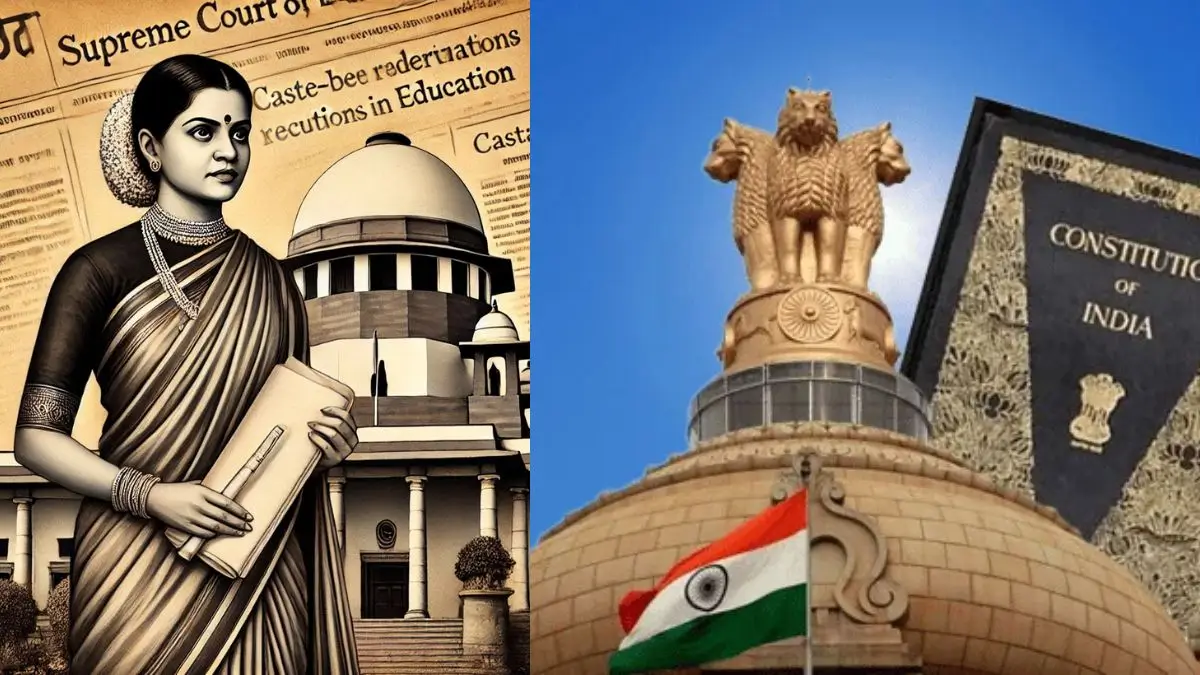Champakam Dorairajan, a Brahmin woman from Madras, played a pivotal role in shaping India’s constitutional history through her legal challenge to caste-based reservations in educational institutions. Her case, State of Madras v. Champakam Dorairajan (1951), led to the First Amendment of the Indian Constitution, which introduced Article 15(4) allowing affirmative action for socially and educationally backward classes. This case marked the first instance where the Supreme Court struck down a law for violating fundamental rights, setting the stage for future debates on merit, equality, and reservations in India.
Key Points from the Case
Background of Champakam Dorairajan
- Born in 1915, completed B.Sc. in Physics and Chemistry from the University of Madras (1934).
- Wanted to become a doctor but financial difficulties forced her into teaching.
- Married into a business family, where her husband ran Dollar & Company, a pharma firm.
- Lived in Madras (now Chennai) and was well aware of the legal community.
The Controversial Communal Government Order (G.O.)
- Introduced by the Madras government in 1948 to allocate educational seats based on caste.
Seats were distributed as follows (out of 14 total seats),
- 6 for non-Brahmin Hindus
- 2 for Backward Hindus
- 2 for Brahmins
- 2 for Harijans (Dalits)
- 1 for Anglo-Indians and Indian Christians
- 1 for Muslims
- This system restricted Brahmin students’ access to medical and engineering colleges.
Legal Challenge & Supreme Court Ruling
- Dorairajan moved the Madras High Court in 1950, arguing the policy violated her fundamental right to equality (Article 14).
- The High Court struck down the Communal G.O. as unconstitutional.
- The Madras government appealed to the Supreme Court.
On April 9, 1951, the Supreme Court ruled that,
- The quota system based on caste and religion violated Articles 14, 15(1), and 29(2) of the Constitution.
- The state cannot discriminate in educational admissions based on caste or religion.
Impact: First Amendment to the Constitution (1951)
- The government faced a setback and introduced the First Amendment to counter the ruling.
Article 15(4) was added, allowing special provisions for,
- Socially and educationally backward classes
- Scheduled Castes (SCs) and Scheduled Tribes (STs)
- This amendment legitimized reservations in educational institutions, beyond just public employment.
Long-Term Legal & Social Implications
- The case sparked a national debate on merit vs. affirmative action, which continues today.
- Over time, judicial interpretations evolved, recognizing reservations as a tool for social justice.
- In 2024, then Chief Justice D.Y. Chandrachud criticized the 1951 ruling, calling it too formalistic and limiting for affirmative action.
- The case highlighted the tension between fundamental rights (Article 14) and directive principles (Article 46), shaping future constitutional amendments.
| Summary/Static | Details |
| Why in the news? | Champakam Dorairajan and the First Amendment: A Landmark Case in Constitutional History |
| Person Involved | Champakam Dorairajan, a Brahmin woman from Madras |
| Issue | Denied admission to medical college due to caste-based reservation (Communal G.O. of 1948) |
| Legal Action | Filed a case in Madras High Court (1950), later appealed in Supreme Court (1951) |
| Verdict | SC struck down caste-based quotas, ruling them unconstitutional |
| Government Response | Introduced First Amendment (1951) to allow reservations in education |
| New Provision Added | Article 15(4) to enable affirmative action for backward classes |
| Impact on Law | Established judiciary’s role in striking down unconstitutional laws |
| Long-Term Effect | Strengthened the legal basis for reservations in education and shaped future amendments |



 Cabinet Nod to Atomic Energy Bill Unlock...
Cabinet Nod to Atomic Energy Bill Unlock...
 Insurance Amendment Bill 2025: Cabinet A...
Insurance Amendment Bill 2025: Cabinet A...
 Government to Rename MGNREGA, Hikes Job ...
Government to Rename MGNREGA, Hikes Job ...







